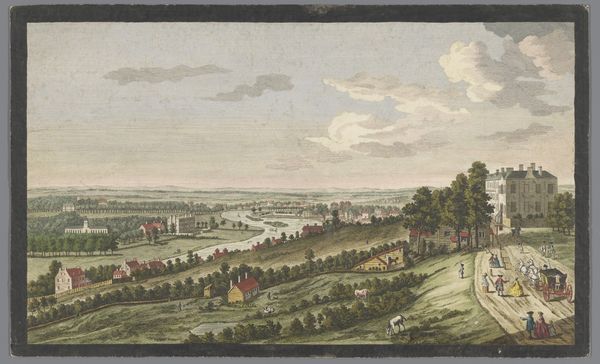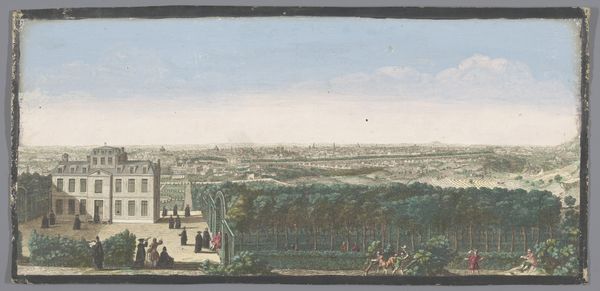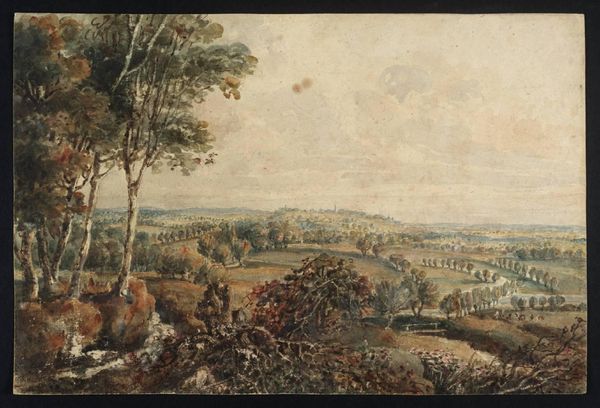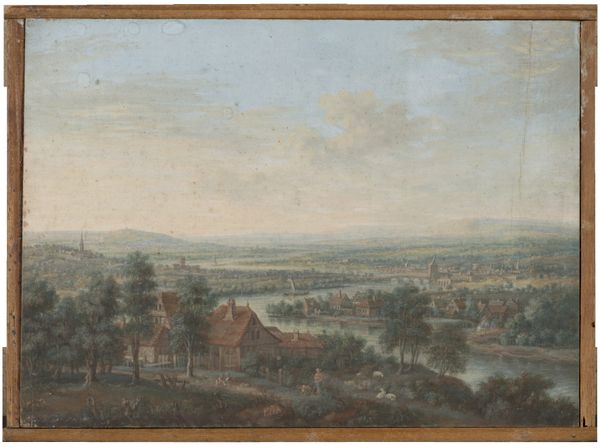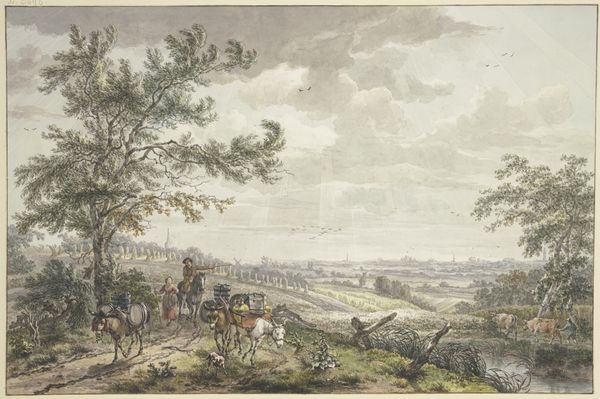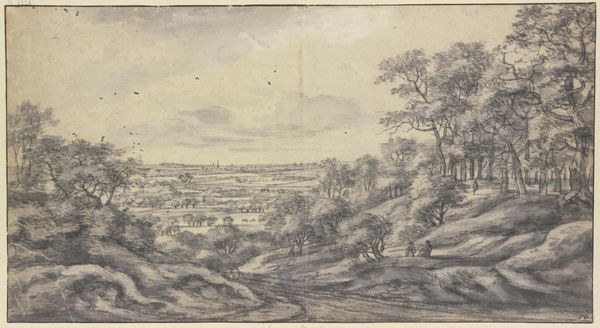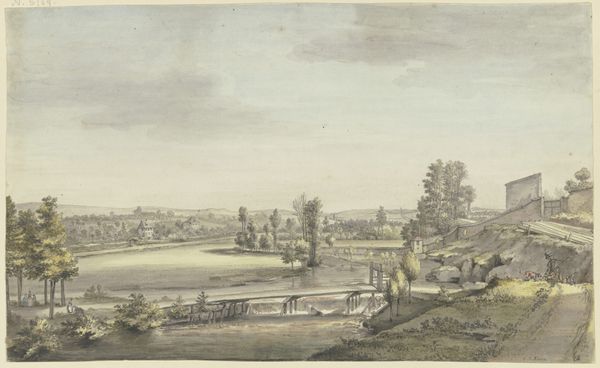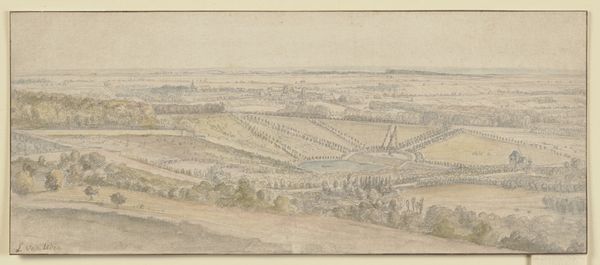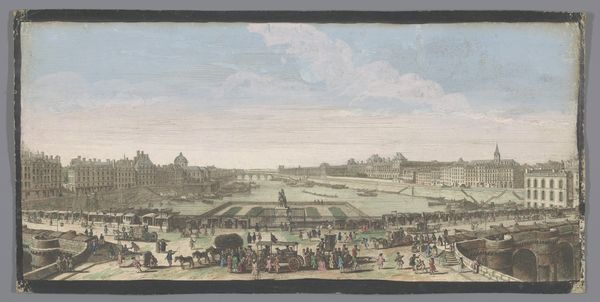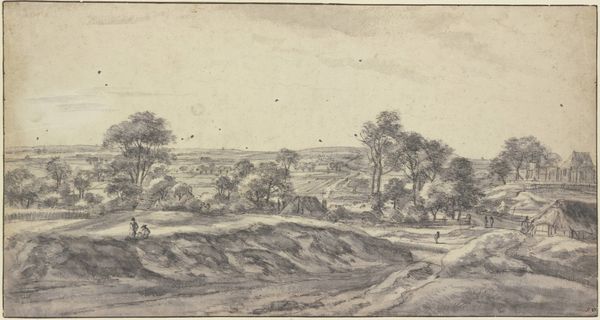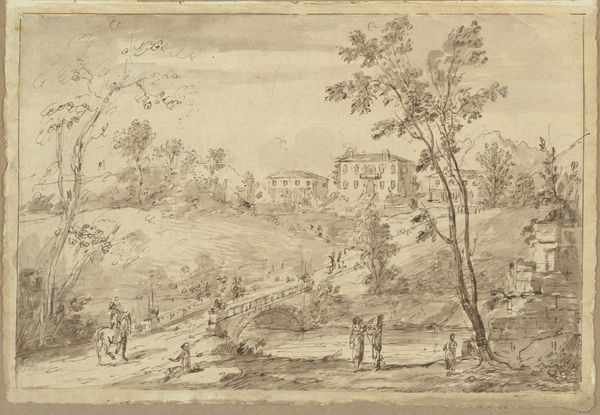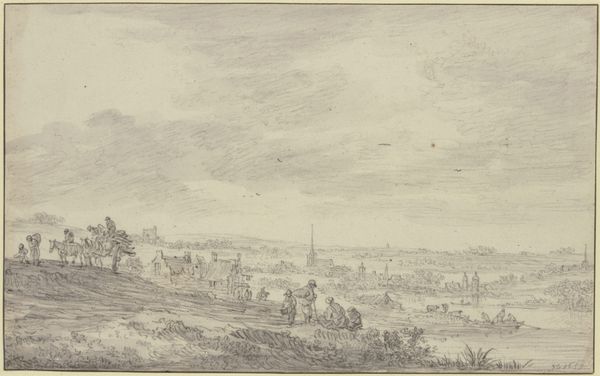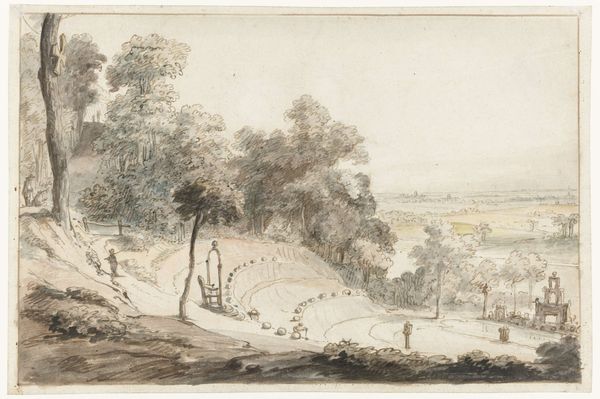
Versailles Seen from the Southwest 1779
0:00
0:00
Dimensions: 8 1/8 x 13 5/16 in. (20.7 x 33.8 cm)
Copyright: Public Domain
Editor: So this is "Versailles Seen from the Southwest" created in 1779 by Louis Nicolas de Lespinasse, it’s a drawing combining ink, pencil, and watercolor. It gives me a slightly detached feeling, like we're viewing wealth and power from a distance. What draws your attention when you look at this piece? Curator: I'm immediately struck by the process of creating this image. Look at the materials—ink, pencil, watercolor—seemingly modest, readily available. How does the choice to depict Versailles, the ultimate symbol of aristocratic excess, with these materials, complicate the work? Is this accessibility a subtle critique? Editor: That's interesting! I hadn't thought about the material choices as a statement. So, are you suggesting that the medium contrasts with the subject matter, potentially revealing something about the social context of its production? Curator: Precisely. Consider the labour involved. Drawing and watercolor, even at this scale, demand time and careful handwork, not unlike tending the Versailles gardens. Is there an implicit commentary on the consumption of labour within the aristocratic system embedded in the work itself? And for whom was it created? Editor: Perhaps not for the aristocracy themselves, then? Maybe more for a middle-class audience interested in viewing such a place, or even as documentation? Curator: Indeed. This landscape isn't just a scene; it’s a crafted object reflecting and possibly questioning the very structures it depicts. Who owned the materials? Were they manufactured locally, nationally, internationally? Those trees... how were they cultivated and what did that say about natural resources? And how do those horseback riders fit into the landscape of labor? Editor: I see, you've given me so much to consider about the materials, the labor, and social implications. It’s more than just a pretty picture of Versailles. Curator: Absolutely. By examining these tangible elements, we reveal deeper societal nuances, even within seemingly straightforward landscape art. There are ways to appreciate high and low culture at once! Editor: This materialist approach really shifted my perspective! I'll definitely look at art through this lens more often now. Thanks.
Comments
No comments
Be the first to comment and join the conversation on the ultimate creative platform.
